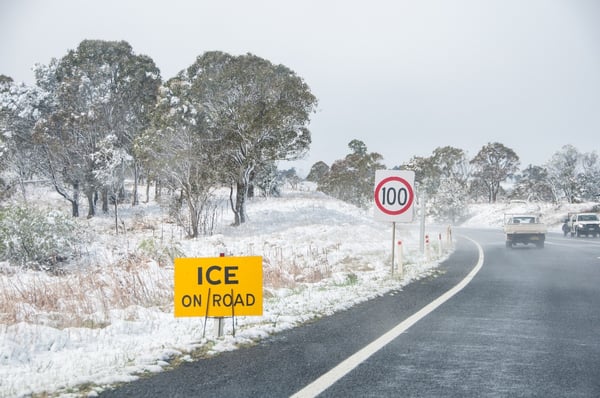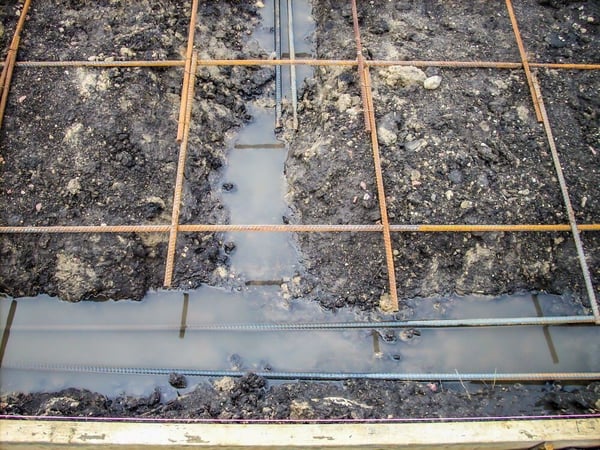While winter in Australia is often associated with milder temperatures compared to other parts of the world, it brings its own unique set of weather-related challenges. From severe storms and flooding to icy winds and even snowfalls, these winter perils can disrupt daily life and pose significant risks to communities and businesses.
Understanding these threats and preparing accordingly is crucial for minimising their impact, enhancing business resilience and safeguarding operations. In this blog post, we’ll explore the key winter weather dangers that Australia faces and offer insights into how to stay safe and resilient during this season.

An Overview of Severe Winter Weather Hazards
By proactively addressing potential weather threats during winter, businesses can minimise operational disruptions, financial losses, and safety concerns.
- Strong Winds
Winter Cold Fronts often bring strong winds, which can cause widespread damage to infrastructure, especially in coastal and elevated areas. Fallen trees and power lines are common issues. The winds combined with low temperatures can also create hazardous conditions for outdoor activities.
- Severe Storms
Thunderstorms can bring heavy rain, strong winds, hail, and lightning, leading to property damage, dangerous traffic routes and power outages. Intense or prolonged rainfall can cause flash floods and dangerous driving conditions.

Wet roads and decreased visibility increase the danger of driving, leading to accidents and delays in transportation.
- Low Temperatures
Unusually cold temperatures can pose health risks to vulnerable populations and strain energy resources as heating demand increases. Frost can damage crops and horticulture, affecting farmers and food supply chains.
- Snow & Ice
In higher elevations such as the Snowy Mountains, Tasmania, and the Victorian Alps, snow can disrupt transportation and pose risks to unprepared travellers. Black ice on roads can lead to dangerous driving conditions and increased accidents.
- Fog
Low-level fog can significantly reduce visibility, leading to transportation and logistics delays and increasing the risk of accidents on roads and highways.
These points highlight the often underestimated winter weather threats that can impact Australia. Understanding how your business can be affected by these hazards is the first step towards mitigating the risks. By being aware of the potential challenges and taking proactive measures, you can ensure that your operations remain resilient and continue to thrive even in the face of severe winter weather.
Which Industries Are Most at Risk for Winter Weather Hazards?
In Australia, several industries are particularly vulnerable to the impacts of winter weather. Here are some of the most at-risk industries:

Frost can damage crops, leading to large financial losses.
- Agriculture and Horticulture
Agriculture is undoubtedly vulnerable to weather extremes. During Winter, frost and cold snaps can damage crops and reduce yields, affecting the food supply chain and leading to financial losses. Heavy rains can waterlog fields and wash away topsoil, damaging crops and infrastructure.
- Transport & Logistics
With deadlines to meet, transport and logistics often have tight delivery schedules, which can be impacted by Winter weather. Early morning fog reduces visibility, increasing the risk of accidents and delays in the delivery of goods, while black ice can disrupt road and rail travel, affecting supply chains and leading to logistical challenges. Strong winds and flooding can damage infrastructure and cause road closures due to issues such as downed powerlines or trees.

Winter sees construction in many parts of Australia be delayed due to bad weather
- Construction & Infrastructure
Severe storms and strong winds can halt construction projects, cause damage to incomplete structures, and pose safety risks to workers, while rain and flooding can delay construction projects and damage materials and machinery.
- Energy and Utilities
A sudden drop in temperatures causes increased demand for heating, putting a strain on energy grids and resources. Strong winds and storms can cause power outages and damage infrastructure, leading to service interruptions. From a renewable power production angle, solar panels see a dramatic reduction in energy production during shorter winter days, and maintenance of renewable energy installations becomes more challenging due to inclement winter weather conditions.
The impacts of winter weather ultimately translate to significant downtime, loss of productivity, and financial losses for businesses across many industries. Implementing effective weather risk mitigation strategies is crucial to safeguarding operations, maintaining productivity, and minimising economic setbacks. By being proactive and prepared, businesses can better navigate the challenges posed by winter weather.
How to Mitigate Severe Winter Weather Hazards
Develop a Comprehensive Emergency Plan
- Conduct a thorough risk assessment to identify potential winter weather hazards specific to your location and industry.
- Establish clear communication channels to keep employees, customers, and stakeholders informed during severe weather events.
- Outline specific procedures for different scenarios, such as power outages, road closures, and supply chain disruptions.
Strengthen Infrastructure and Facilities
- Regularly inspect and maintain buildings, equipment, and infrastructure to ensure they can withstand severe weather conditions.
- Install backup power generators and ensure critical systems have redundancy to maintain operations during outages.
- Take measures to weatherproof facilities, such as reinforcing roofs, sealing windows and doors, and securing outdoor equipment.
- Ensuring that workspaces are properly heated is crucial when facing harsh winter weather conditions at work. It's important to acknowledge the detrimental impact a cold environment can have on employees' morale and performance levels, making adequate heating a top priority.
Implement Flexible Work Arrangements
- Establish remote work policies to ensure business continuity when travel conditions are unsafe.
- Allow for flexible scheduling to accommodate employees who may face delays or disruptions due to weather conditions.
- Encourage employees to prioritise their safety and avoid commuting during dangerous weather.
Invest in Weather Monitoring and Alert Systems
Working with the Early Warning Network (EWN) can significantly enhance your business's preparedness for winter weather. EWN offers advanced weather monitoring systems that provide real-time updates and alerts about severe weather conditions, ensuring that your employees have the most current information at your fingertips. With EWN, you can:
-
Receive Real-Time Updates and Alerts with our leading technology. With a successful history and local knowledge paired with industry leaders such as Tomorrow.io, we deliver immediate notifications about severe weather events, allowing you to take proactive measures to protect your business and employees. Whether its thunderstorms, flooding, strong winds, or early morning fog, EWN ensures you're always informed.
-
Integrate weather data seamlessly into your operational systems. This allows for automated responses, ensuring timely actions that can mitigate risks and minimise disruptions. From adjusting logistics to activating emergency protocols, EWN’s data-driven approach helps streamline your response to adverse weather conditions.
-
Ensure employees are trained on severe weather response. We will work with your team to educate your employees on how to respond to weather alerts and implement safety measures effectively. By ensuring your team is well-prepared and knowledgeable, you can enhance overall safety and operational continuity during severe weather events.
Investing in EWN’s weather monitoring and alert systems is a strategic move to safeguard your business against the unpredictable nature of winter weather. With EWN, you can stay ahead of the weather, protect your assets, and ensure the safety and productivity of your workforce.